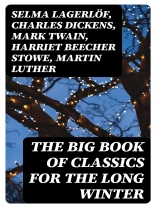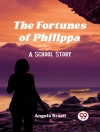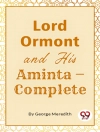In 'The Big Book of Classics for the Long Winter, ’ readers are offered a kaleidoscope of literary styles and forms, capturing a rich tapestry of themes spanning morality, family, adventure, and the quest for personal and social transformation. This anthology, curated thoughtfully, brings together timeless tales and poems that traverse the realms of fantasy, poignant realism, and the spectral. Each piece, from the whimsical to the introspective, stands testament to the boundless imagination and profound insight that classic literature offers, promising both entertainment and reflection during the prolonged, contemplative winter months. The anthology is a remarkable gathering of renowned authors whose words have shaped the canon of Western literature. From the tender narratives of Louisa May Alcott to the sharp wit of Mark Twain, each contributor possesses a distinct voice and perspective that enriches the theme of the collection. The presence of luminaries such as Dostoevsky and Dickens aligns the collection with significant literary movements and historical frameworks, inviting readers to navigate the crossroads of different eras, cultures, and ideologies through the diverse stories and poems they have left behind. This anthology presents an invaluable opportunity for readers to immerse themselves in a curated selection of literary masterpieces. By juxtaposing varying narrative techniques and thematic explorations, it promises to stimulate intellectual engagement and foster appreciation for literary diversity. Ideal for both seasoned scholars and new readers alike, 'The Big Book of Classics for the Long Winter’ encourages contemplation and discussion on the myriad ways these timeless works speak to the human condition, transforming each reading session into a journey of discovery and dialogue.
O autorze
Selma Lagerlöf (1858–1940) was a Swedish author and the first woman to win the Nobel Prize in Literature in 1909. Lagerlöf’s literary career was distinguished by her unique blend of realism and fantasy, which allowed her narratives to resonate with both a sense of historical authenticity and a timeless fairy-tale quality. Born in Mårbacka, Värmland, she used her rural upbringing amongst the natural beauty and folklore of her native land as the canvas for much of her writing. Lagerlöf’s most famous work is the two-volume novel 'Gösta Berling’s Saga’ (1891), a romanticized yet critical portrayal of rural Swedish life that brought her initial acclaim. Her book 'The Wonderful Adventures of Nils’ (1906–1907) remains a classic of children’s literature, entwining educational elements with engaging storytelling, designed to teach Swedish geography through a magical journey. The book referred to as 'The Big Book of Classics for the Long Winter’ does not appear to be a recognized work by Lagerlöf, and may instead be an anthology wherein her works are featured. Regardless, her literary style has been appreciated for its lyrical quality, its pioneering use of local dialects, and the seamless weaving of folklore into modern narrative forms, making her an enduring figure in Scandinavian literature.












